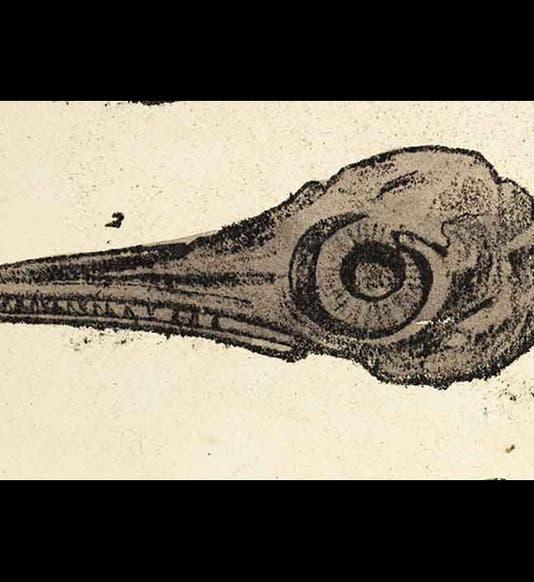Scientist of the Day - George Young
George Young, a Scottish minister and geologist, died May 8, 1848, at the age of 70. Young spent most of his life in Whitby, a port town in Yorkshire, in northern England, notable as the home of whaler William Scoresby and explorer James Cook. Young was a talented geologist--he trained under John Playfair at Edinburgh, who at the time was the foremost defender of the uniformitarian geology of James Hutton—and in 1822, Young published a treatise on his home stomping ground, called A Geological Survey of the Yorkshire Coast. It has a geological map and 17 plates of fossils that he had unearthed in such places as Kirkdale Cave, a cavern that would become much better known when William Buckland explored and discussed it in his Reliquiae Diluvianae of 1823, arguing that it was a prehistoric hyena den. Young, who served as pastor at a Whitby church for 40 years, could not agree, preferring to believe that the fossils were washed into the cave by Noah's flood, and not dragged in by hungry hyenas. Young's geology might not have been cutting edge, but he certainly was in the vanguard when it came to scientific illustration. He chose to illustrate his fossils with lithographs, which were still a brand new art form in England, and his Geological Survey is the third oldest book in our Library to contain lithographs. Accordingly, we included it in our Crayon and Stone exhibition on lithography in 2013. Young was also a founder of the Whitby Museum, and many of the fossils there are probably ones that he himself collected.
The images above are all from Young’s Geological Survey, and show, in order: a detail of an ichthyosaur skull; a detail of a cave bear jaw from Kirkdale Cave; geological sections of Yorkshire, the full plate of ichthyosaur fossils, the full plate of Kirkdale Cave remains, and the title page.
Dr. William B. Ashworth, Jr., Consultant for the History of Science, Linda Hall Library and Associate Professor, Department of History, University of Missouri-Kansas City









![Andromeda and Perseus, constellations figured by James Thornhill, with star positions determined by John Flamsteed, in Atlas coelestis, plate [15], 1729 (Linda Hall Library)](https://assets-us-01.kc-usercontent.com:443/9dd25524-761a-000d-d79f-86a5086d4774/1b30cfec-5be6-4297-a7fb-97255ba992e5/thornhill1.jpg?w=210&h=210&auto=format&fit=crop)


